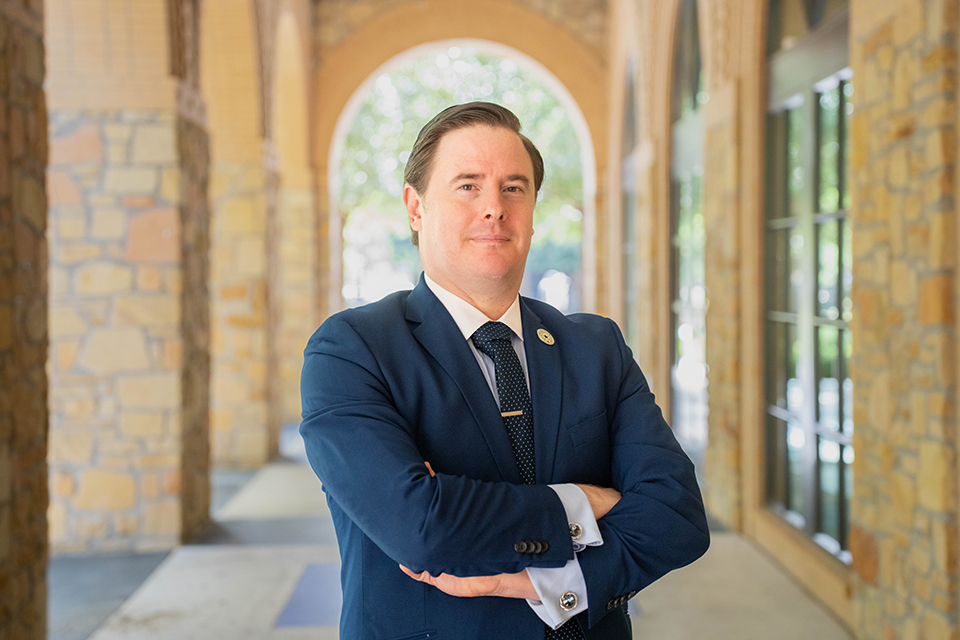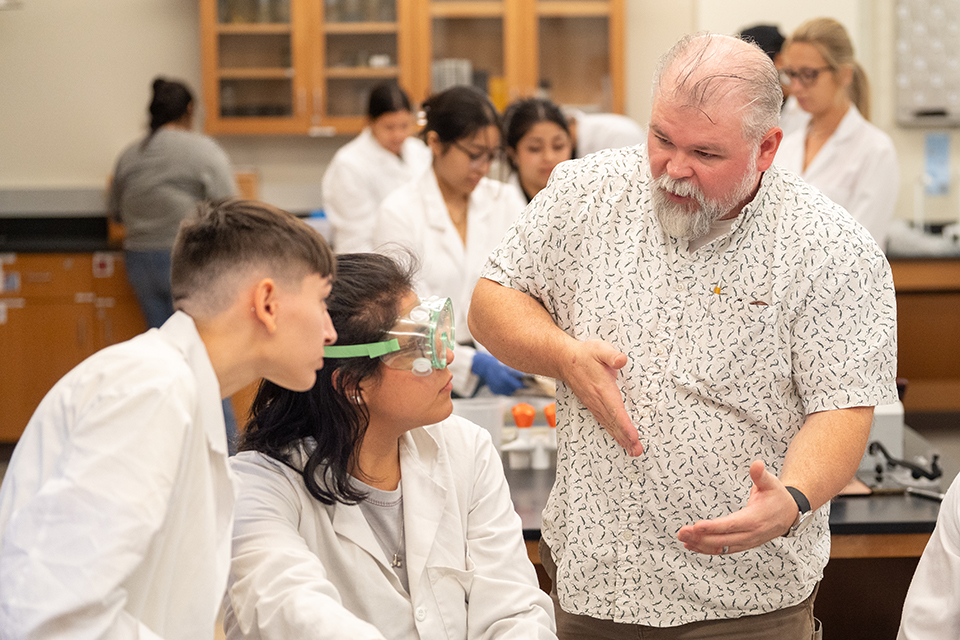For students at Texas A&M University-San Antonio, a graduate degree isn’t just a credential; it’s a step toward purpose, career transformation, and community impact.
With nearly 1,000 graduate students and growing, the University is expanding its offerings and support systems to meet students where they are. This approach is designed for working professionals, parents, and first-generation scholars balancing school, work, and family.
“The majority of our students are looking for career advancement,” said Adrian Membrez, manager of graduate studies. “That could mean gaining specialized training or transitioning into a completely new field.”
 Business programs top the list in enrollment. The University offers two MBA formats: an online, asynchronous option and an accelerated 11-month cohort program. Mental health counseling programs follow closely.
Business programs top the list in enrollment. The University offers two MBA formats: an online, asynchronous option and an accelerated 11-month cohort program. Mental health counseling programs follow closely.
“We get over 100 applications each cycle, but the program is capped at 30 students,” Membrez said.
Other programs in education, computer science, cybersecurity, and the sciences are also steadily gaining traction, attracting students focused on licensure, job security, or doctoral study.
Dr. Ting Liu, dean of graduate studies, emphasized that the University has tailored its infrastructure and resources around graduate student success.
“We have an entire suite of services to help our graduate students thrive,” she said. “It’s about creating a sense of belonging and offering personalized support.”
One standout resource is El Centro, a designated graduate study space inside the University library. The space includes private and group study areas, graduate-level tutors, and access to a learning library filled with textbooks and e-books.
“We don’t just say, ‘Welcome’ and leave them on their own,” Liu said. “We walk with them all the way to graduation.”
For many students, A&M-San Antonio’s affordability, accelerated options and strong faculty mentorship make graduate school more accessible. This support system plays a critical role in student success.
Dr. Charles Matt Watson, professor of biology, has guided dozens of graduate students through thesis-based and non-thesis programs. He emphasized that the value of a graduate degree depends on the student’s goals, but the benefits are often far-reaching.
 “Getting a master’s degree increases your earning potential and your chances for upward mobility in your career,” Watson said. “It can be about self-fulfillment, or it can mean tens of thousands more per year. In either case, it creates real advantages.”
“Getting a master’s degree increases your earning potential and your chances for upward mobility in your career,” Watson said. “It can be about self-fulfillment, or it can mean tens of thousands more per year. In either case, it creates real advantages.”
Watson added that students in his program often work directly with active researchers publishing in their fields, providing meaningful research opportunities and exposure that can serve as a springboard into doctoral programs.
“There’s a point where students become the expert in their narrow topic,” he said. “That realization is powerful and it builds confidence and helps them reimagine what they’re capable of.”
Beyond economic value, A&M-San Antonio’s programs also align with real-world workforce demands. Courses are structured with market relevancy in mind, and many programs emphasize applied learning, licensure preparation or research.
Liu noted that the University’s expedited admission process helps retain talented undergraduates by simplifying the transition to graduate programs. Seniors can apply using a one-page application with no fee and receive a decision within a week.
“If they did well as undergrads here, we already know who they are,” Liu said. “Why make them go through unnecessary steps?”
This homegrown model reflects the deep-rooted ties many students have to the South Side.
“So many of our students are from here. They don’t want to leave,” Liu said. “They love this community, and they want to continue learning and serving right here.”
That community-driven spirit helps shape the culture of graduate education on campus.
“Our students become our ambassadors,” Liu said. “They tell their friends, their coworkers, their family—we’ve had mothers and daughters enroll together. It’s incredible.”
For Liu, the message to prospective students is simple: start with your goal.
“I always ask them: What do you want to do? Where do you want to go?” she said. “Once you know that, we can help get you there.”